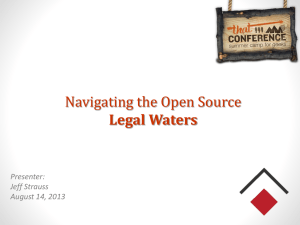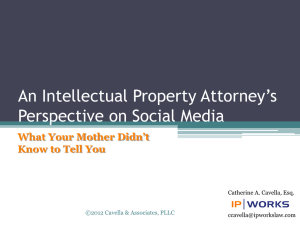Which License Should I Apply to My Data?
advertisement
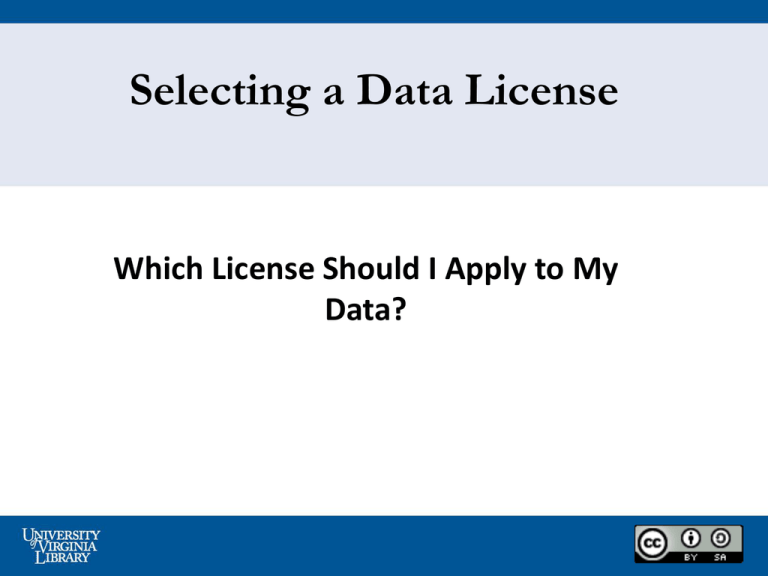
Selecting a Data License Which License Should I Apply to My Data? Which license should I select? It is always a good idea to select a license which is commonly used. This helps to ensure the maximum re-usability of your work. If your discipline usually uses a specific license, then you should strongly consider it as well. Public Domain ‘licenses’ are actually waivers that remove the copyright and related rights to your content. They place your data into the open for anyone to use as they wish, with no restrictions, and no attribution requirement. There are three main providers for data licenses: Creative Commons, Open Data Commons, and GNU. They each have specific strengths, and are intended for different data formats. 2 Creative Commons Creative Commons licenses are the best choice for most all of your content. All CC licenses require attribution. http://creativecommons.org/licenses/ •CC BY: Allows others to distribute, remix, tweak, and build on your work, even commercially. •CC BY-SA: Allows others to distribute, remix, tweak, and build on your work, even commercially, and they must license their new creations under the same terms. •CC BY-ND: Allows for redistribution, commercial or noncommercial use, but they can’t change the work. 3 Creative Commons CC BY-NC: Allows others to distribute, remix, tweak, and build on your work, even non-commercially. Their new works must be noncommercial, but they can license them under different terms. CC BY-NC-SA: Allows others to distribute, remix, tweak, and build on your work, non-commercially, and they must license their new creations under the same terms. CC BY-NC-ND: Others can only download and share your works. The Creative Commons Zero (CC0) is a public domain dedication which can be used if you wish to permanently surrender your copyright and related rights to your work, with no attribution. It can be used for all types of content. http://creativecommons.org/about/cc0 4 Open Data Commons Open Database License (ODbL): Anyone is free to copy, distribute, use, create new works from, modify, build upon or transform the data or database. They must attribute you as specified in the license, offer any new work under the same terms, and release a public copy if using the new work for commercial purposes. http://opendatacommons.org/licenses/odbl/ ODC Database Contents License (DbCL): You waive all rights to the individual contents of a database licensed under the ODbL. This license protects your rights to the design of a database, and waives all rights to the data in the database. http://opendatacommons.org/licenses/dbcl/ 5 Open Data Commons ODC Attribution License: Anyone is free to copy, distribute, use, create new works from, modify, build upon or transform the data or database. They must attribute you as specified in the license. They can release new work under any terms, but must keep intact any notices on the original data or database. http://opendatacommons.org/licenses/by/ ODC Public Domain Dedication and License (PDDL): This places the data or database in the public domain by waiving all your rights. No attribution. http://opendatacommons.org/licenses/pddl/ 6 GNU licenses for software, code & scripts The GNU General Public License (GPLv3) is the most commonly used license for software packages. http://www.gnu.org/licenses/quick-guide-gplv3.html The GNU Lesser General Public License (LGPL) is for software libraries used in proprietary programs. Use the GPL for free programs. http://www.gnu.org/licenses/lgpl.html The GNU Affero General Public License (AGPL) is for software that primarily runs on servers or over a network, allowing users access to the source code. http://www.gnu.org/licenses/agpl.html Information about these and the other GNU licenses can be found at http://www.gnu.org/licenses/licenses.html 7 GNU license for manuals & documentation GNU Free Documentation License (FDL) is for manuals, textbooks, or other functional documents and allows others to copy and redistribute, with or without modifications, either commercially or non-commercially. http://www.gnu.org/licenses/fdl.html GNU has a comprehensive list of licenses at http://www.gnu.org/licenses/license-list.html#OtherLicenses A good introduction to open source licensing and how the proper selection relates to copyright and intellectual property concerns can be found at the OSS Watch website http://oss-watch.ac.uk/resources/licdiff 8 Open Source licenses for fonts and art SIL Open Font License (OFL) allows licensed fonts to be used, modified and redistributed only if they are not sold by themselves. They must be embedded or bundled. http://scripts.sil.org/cms/scripts/page.php?site_id=nrsi&id=OFL_web Free Art License: Attribution. Anyone can copy, distribute, perform in public, and modify the work, as long as you apply this license to any new work, and point to the original credited work. This can be applied to any text, picture, sound, or gesture that you have rights to, both physical and digital. http://artlibre.org/licence/lal/en Additional information about open source licenses can be found at the Open Source Initiative. http://opensource.org/ 9 Need assistance or have questions? • The UVa Library Research Data Services provides consulting and training services to UVA researchers and graduate students in all aspects of research data management. • We can help you navigate and negotiate through the tricky issues and many approvals in order to responsibly share your research data. • Contact us at dmconsult@virginia.edu 10
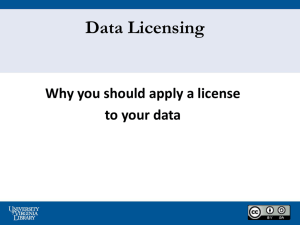
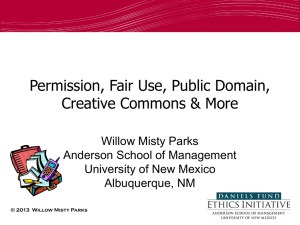
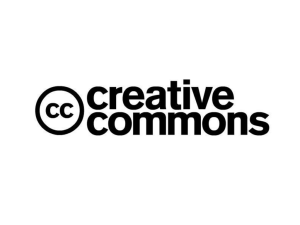
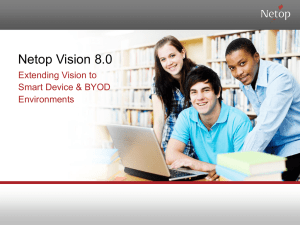
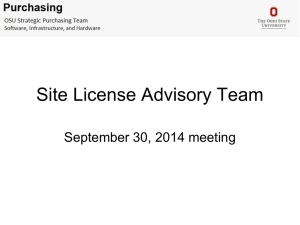
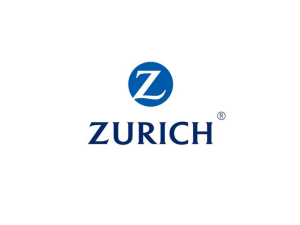
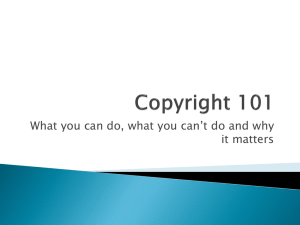
![Copyleft Presentation [English]](http://s2.studylib.net/store/data/005422621_1-22fca5bcd233f6088a57b404dac969db-300x300.png)
